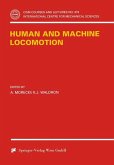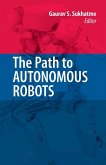Revision with unchanged content. Biomimetics is the use of principles learned in biological systems to manmade systems. The Sprawl family of robots are inspired by research on cockroaches and other agile runners. Without maneuverability, these robots are limited to straight running and stability investigations, as well as reduced real-world applicability. Because of their performance and versatility, the Sprawlettes and iSprawl, two members of the Sprawl family, serve as good platforms to study biomimetic inspired maneuvers. In this work, Design of Experiment techniques are used to identify the single most effective turning method. Then this method is further studied to yield a single variable which can provide a full range of turning behavior. Using this variable, system identification techniques were applied to identify bandwidth limitations and characterize the turning dynamics. The similarities and differences in the Sprawlettes and iSprawl have contributed to the understanding and explanation of turning behavior for dynamic legged robots, and helped develop dynamic maneuverability concepts to aid future investigations.
Hinweis: Dieser Artikel kann nur an eine deutsche Lieferadresse ausgeliefert werden.
Hinweis: Dieser Artikel kann nur an eine deutsche Lieferadresse ausgeliefert werden.








